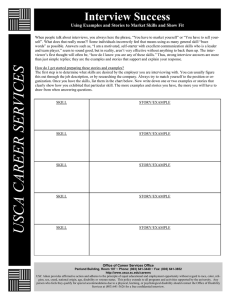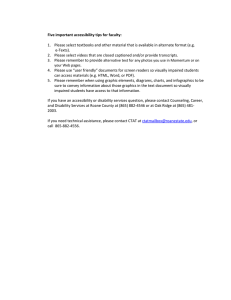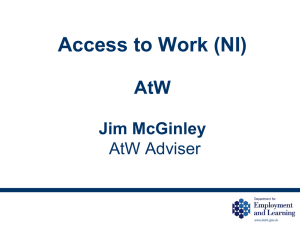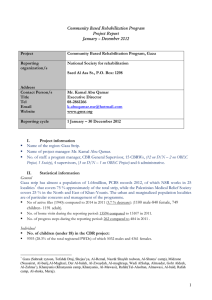vii Ii Iii
advertisement
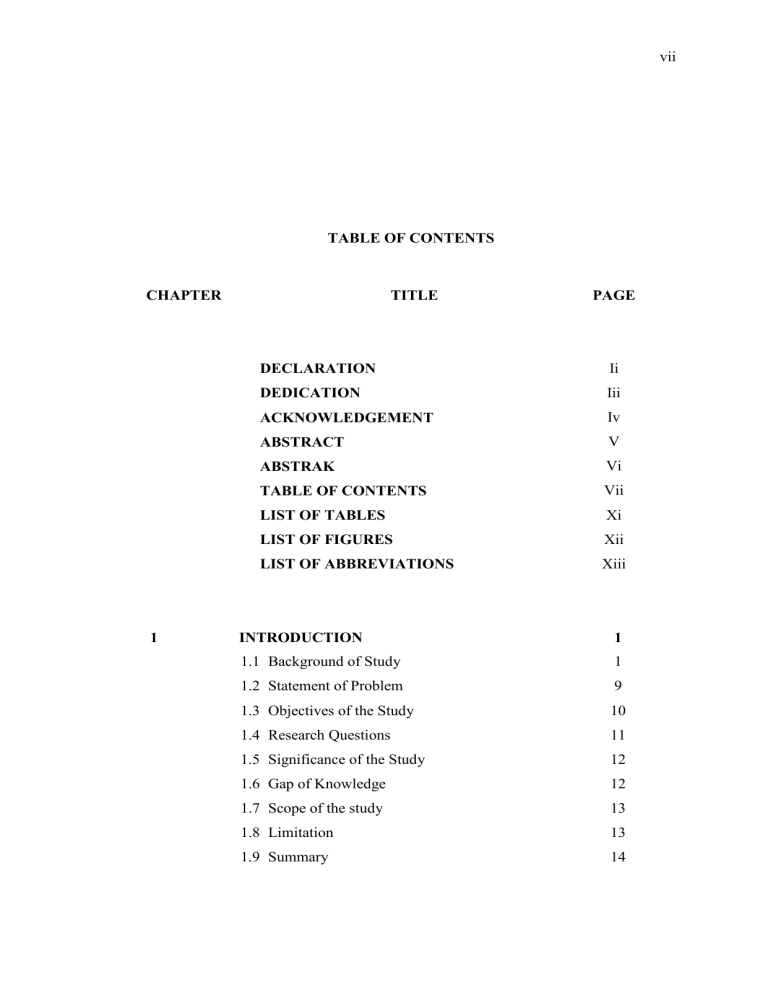
vii TABLE OF CONTENTS CHAPTER 1 TITLE PAGE DECLARATION Ii DEDICATION Iii ACKNOWLEDGEMENT Iv ABSTRACT V ABSTRAK Vi TABLE OF CONTENTS Vii LIST OF TABLES Xi LIST OF FIGURES Xii LIST OF ABBREVIATIONS Xiii INTRODUCTION 1 1.1 Background of Study 1 1.2 Statement of Problem 9 1.3 Objectives of the Study 10 1.4 Research Questions 11 1.5 Significance of the Study 12 1.6 Gap of Knowledge 12 1.7 Scope of the study 13 1.8 Limitation 13 1.9 Summary 14 viii CONCEPT AND CHARATERISTICS 2 OF UNIVERSAL DESIGN 2.1 Introduction 15 2.2 The Concept of Inclusive Living 17 2.3 The Universal Design Concept 20 2.4 What is Disability? 29 2.4.1 Definitions of Terms 31 2.4.2 Disability Awareness 32 2.4.3 Types of Disabilities 32 2.5 The Americans with Disability Act (ADA) 36 2.6 The Concept of Universal Design in Malaysia 37 2.7 Historical Development of the Concept of UD 40 2.8 Integrating Seven Principles of UD into Planning Practice 40 2.9 3 15 2.8.1 Universal Design and Visitability 41 2.8.2 Potential Challenges of Universal Design 42 2.8.3 Benefits of Universal Design 43 2.8.4 Basic Challenges of Social Exclusion 44 2.8.5 Significant Considerations in Universal Design 45 A Brief on the Case Study City 46 2.9.1 Creating the Essence of Cities 47 2.9.2 Respect for Pedestrians 48 2.9.3 Attention to Public Transportation 48 RESEARCH METHODOLOGY 51 3.1 Research Focus 51 3.2 Research Paradigm 51 3.3 Research Methods 52 3.4 Research Methodology Framework 53 3.5 Research Instruments Design 54 3.5.1 55 Data Gathering/Instrumentation ix 3.6 3.7 4 Recording and Data Management 55 3.5.3 Document Gathering 56 Semi-Structured Interview 57 3.6.1 Observations 57 Qualitative Data Collection 58 3.7.1 Primary and Secondary Data Collection 59 3.7.2 Sampling 60 3.7.3 Sampling Frame for Interview 61 3.7.4 Interview Analysis 61 3.7.5 Interview Participants 63 3.8 Data Analysis and Coding 64 3.9 Generation of Charts for Interpretation of Data 67 3.10 Research Validity and Reliability 68 3.12 Chapter Summary 70 ANALYSIS AND FINDING 71 4.1 Introduction 71 4.1.1 Research Questions 73 4.1.2 Case Study 73 4.2 4.3 5 3.5.2 Emerging Themes from the Research 74 4.2.1 The Term Universal Design 74 4.2.2 Opinion to Implement UD 76 4.2.3 Reasons for non Implementation of UD 80 4.2.4 Segregation of PWDs 82 4.2.5 Difficulties Encountered by PWDs 88 4.2.6 Cost of Designing Inclusive Buildings 91 4.2.7 Existing Policy 93 Chapter Summary DISCUSSIONS AND CONCLUSION 99 100 x 5.1 Introduction 100 5.2 UD Criteria Applicability 101 5.3 Factors Influencing Consumer Interests 105 5.4 Reasons for Non Implementation 110 5.5 Cost of Adoption 113 5.6 Research Contributions 119 5.7 Conclusions 120 5.8 Limitations 122 REFERENCES APPENDIXES 123 130-152 xi LIST OF TABLES TABLE NO TITLE PAGE 1.1 Accessibility Facilities in Public Buildings 4 3.1 Demography of Participants 64 3.2 Result of the Coding 67 3.3 Summary of Research Analysis 69 5.1 Factors Influencing Interest in Universal Design 109 5.2 Reasons for non-Implementation 113 5.3 Time to Implement Universal Design 116 5.4 Cost of Implementation of Universal Design 117 xii LIST OF FIGURES FIGURE NO TITLE PAGE 1.1 Accessibility Facilities in Public Buildings 5 3.1 Research Methodology Framework 54 3.2 Component of Data Analysis 63 3.3 Qualitative Analytical Process 66 5.1 Factors Influencing Interest in Universal Design 109 5.2 Reasons for non Implementation 113 5.3 Time to Implement Universal Design 117 5.4 Cost of Implementation of Universal Design 117 5.5 Research Framework 119 xiii LIST OF ABBREVIATIONS ADA Americans with Disability Acts CCC Certificate of Completion & Compliance DDRR Demand Side Respondent ISO International Standard Organization MS Malaysian Standards PWD People with Disability PJ Putrajaya SSRR Supply Side Respondent UN United Nations UD Universal Design USA United States of America UFAS Uniform Federal Accessibility Standard UBBL Uniform Building By Laws WC Water Closet WHO World Health Organization
